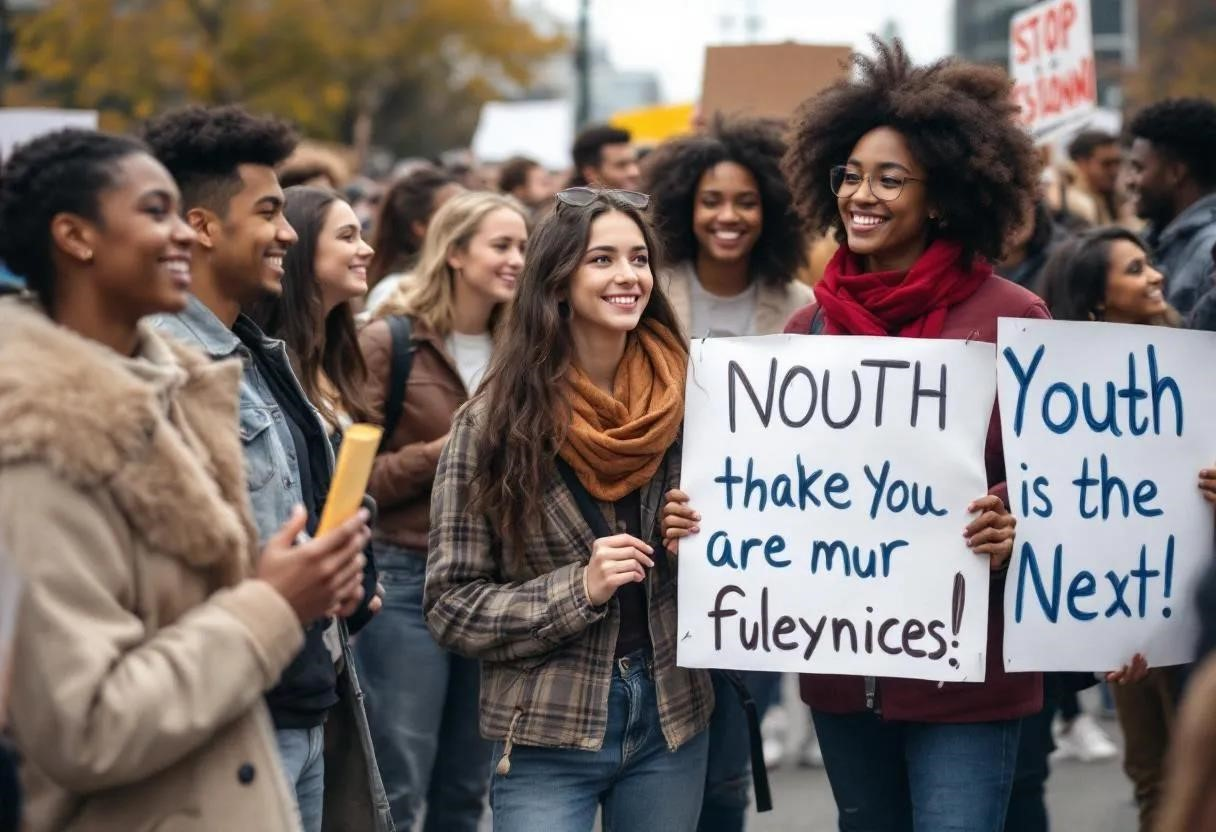
Kumusta, kabataan! (Hello, youth!) I’m Mateo Alcantara. For years, I’ve been side-by-side with young people like you, helping turn your passion into real change. From my days at Kabalikat Para Sa Kabataan to now, building a platform for youth voices online, I’ve seen firsthand the incredible impact you can have. This isn’t just about shouting slogans; it’s about crafting real, lasting change in your communities. So, let’s talk strategies that actually work, okay?
Why Your Voice Matters
Ever wonder if you can really make a difference? Let me tell you, the answer is a resounding YES! Youth advocacy is so important. You bring fresh ideas, real-life experiences, and a ton of energy to the table. You are the future, and your voices deserve to be heard when decisions are being made about your lives and the world around you.
Think about it: Who knows more about the challenges students face than the students themselves? Who understands the impact of climate change on future generations better than you?

I remember a group of young people in Cebu. They organized to improve their local school. They went to the local government, pointed out the lack of resources and how it was hurting their education. They used facts, shared personal stories, and a whole lot of diskarte (resourcefulness) to get their point across. And guess what? They won! They got funding for new classrooms and equipment. Proof that even the smallest voices can create big waves.
Turning Passion into Action: Strategies That Work
So, how do you take that fire in your belly and turn it into real action? Here are some strategies to consider:
Grassroots Organizing: Building Power from the Ground Up
This is about connecting with people in your community, finding common ground, and working together for solutions. Here’s how:
- Identify issues: What problems do you see at school, in your neighborhood, or community? Lack of safe spaces? Pollution? Limited access to education? Start by listening to your peers and understanding their concerns.
- Build a team: Find others who are passionate about the same things. ‘Ika nga! (as they say!) There’s strength in numbers!
- Community meetings: Organize meetings to talk about the issues, brainstorm ideas, and create an action plan.
- Direct action: Peaceful protests, rallies, demonstrations – all ways to raise awareness and demand change.
Policy Advocacy: Influencing Decision-Makers
This is about engaging with government officials to influence laws and regulations. It takes research, preparation, and good communication. Here’s how to get started:
- Research: Know the existing policies related to your issue. What’s missing? What needs to change?
- Develop a policy brief: Summarize your research and propose specific changes.
- Meet with policymakers: Schedule meetings with elected officials and government agencies to present your case.
- Lobbying: Advocate for your policy recommendations. Contact policymakers, write letters, testify at public hearings.
Digital Activism: Mobilizing Support Online
Social media is powerful! Use it to raise awareness, rally support, and amplify your voice. Some tips:
- Create engaging content: Share stories, videos, and infographics that highlight the issue and its impact.
- Use hashtags: Connect with others and reach a wider audience.
- Start online petitions: Platforms like Change.org can gather signatures and show public support.
- Organize online campaigns: Raise awareness, educate the public, and mobilize action.
- Be responsible: Verify information before you share it. Don’t spread misinformation.
Leadership and Participation: It Starts with You
It’s not just about getting adults to listen. It’s about empowering young people to lead. This means:
- Creating youth-led organizations: Where young people can take charge and make decisions.
- Mentorship programs: Connect young advocates with experienced mentors for guidance.
- Advocacy training: Training on public speaking, media relations, and policy analysis.
- Participatory decision-making: Making sure young people are involved in decisions that affect their lives.
Partnerships: Strength in Numbers
Don’t go it alone! Partner with local organizations, community leaders, and others to strengthen your efforts. They can provide resources, expertise, and networks to help you reach your goals. Find organizations that share your values and are committed to youth empowerment.
Challenges: Staying Strong
Advocacy isn’t always easy. You’ll face challenges and setbacks. The key is to stay strong, flexible, and never give up. Don’t be discouraged by failures. Learn from them, adjust your plans, and keep going. Remember, change takes time, and your hard work will pay off.
Bayanihan – that’s the spirit we need. Working together to achieve a common goal. When we unite, we become unstoppable.
Ready to Jump In?
So, what are you waiting for? Find an issue you care about, get your friends together, and start planning your campaign. The world needs your voice, your passion, and your galing (talent). Kaya mo yan! (You can do it!)
Remember, even small actions matter. Signing a petition, attending a rally, writing a letter – you are making a difference. Your voice matters, and together, we can create a better future for everyone.

